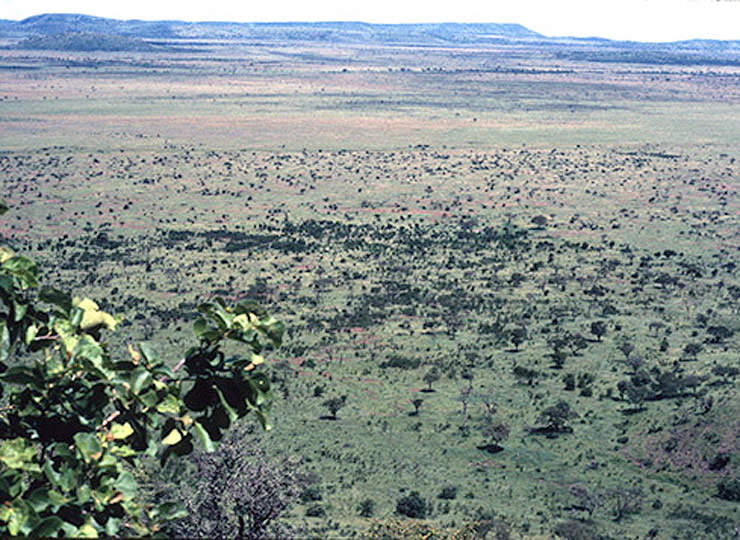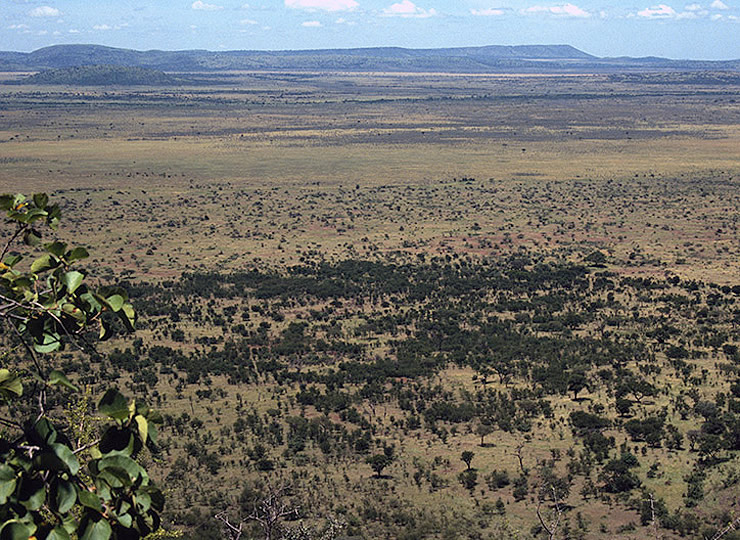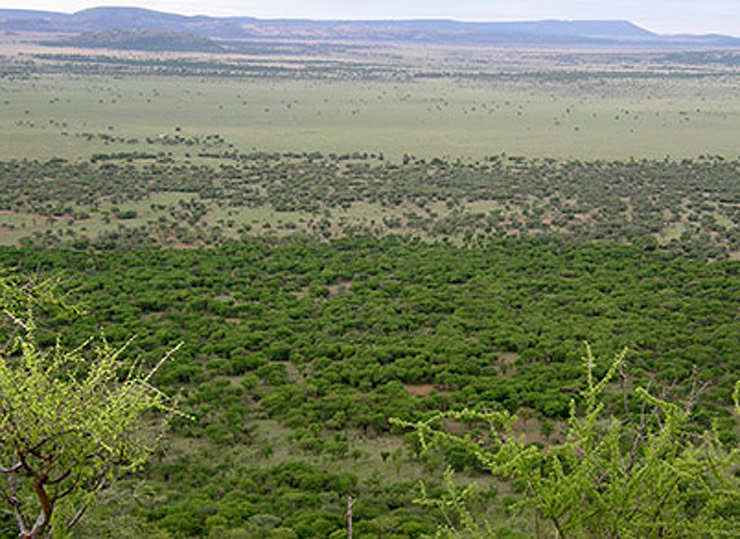Blue Wildebeest
Connochaetes taurinus
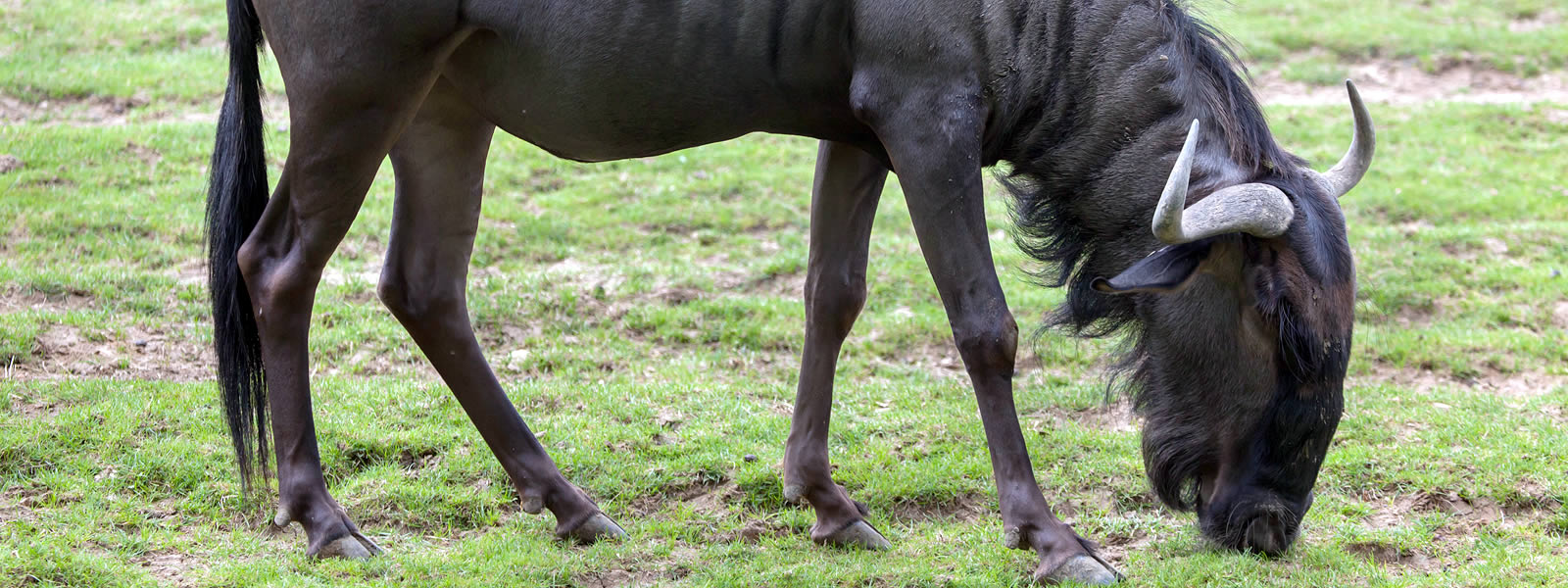
Wildebeest are the “lawnmowers” of the Serengeti. They trim the grass and keep the savanna ecosystem healthy in some unexpected ways.
Range map of the blue wildebeest
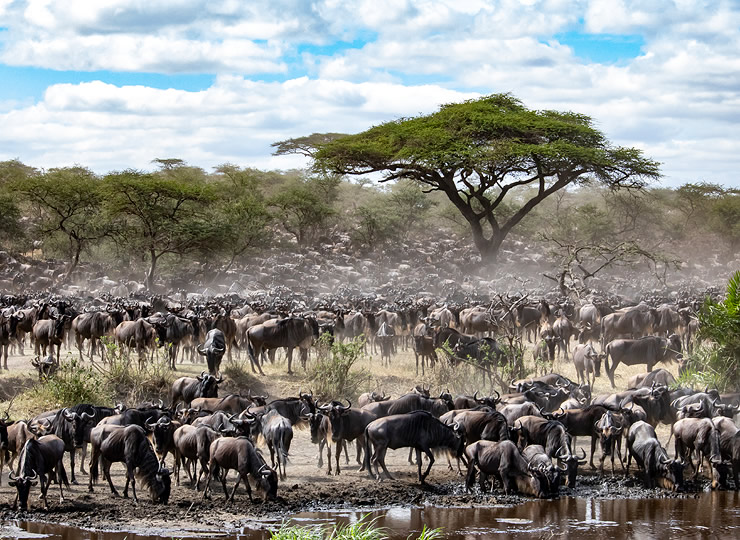
Wildebeest live and migrate in vast herds on the Serengeti. Photo credit: iStock/Getty Images Plus
Wildebeest are herbivores from the Serengeti, a large ecosystem in Africa known for its diversity of animals. Blue wildebeest live in vast herds on the Serengeti grasslands.
Blue wildebeest (Connochaetes taurinus)
Every year, about 1.3 million wildebeest take part in one of the largest animal migrations on Earth. They follow the seasonal rains across the Serengeti, looking for green grass to eat. The wildebeest keep the grasses short and fertilize the ground with their waste as they go. But their influence extends beyond just keeping grasses healthy.
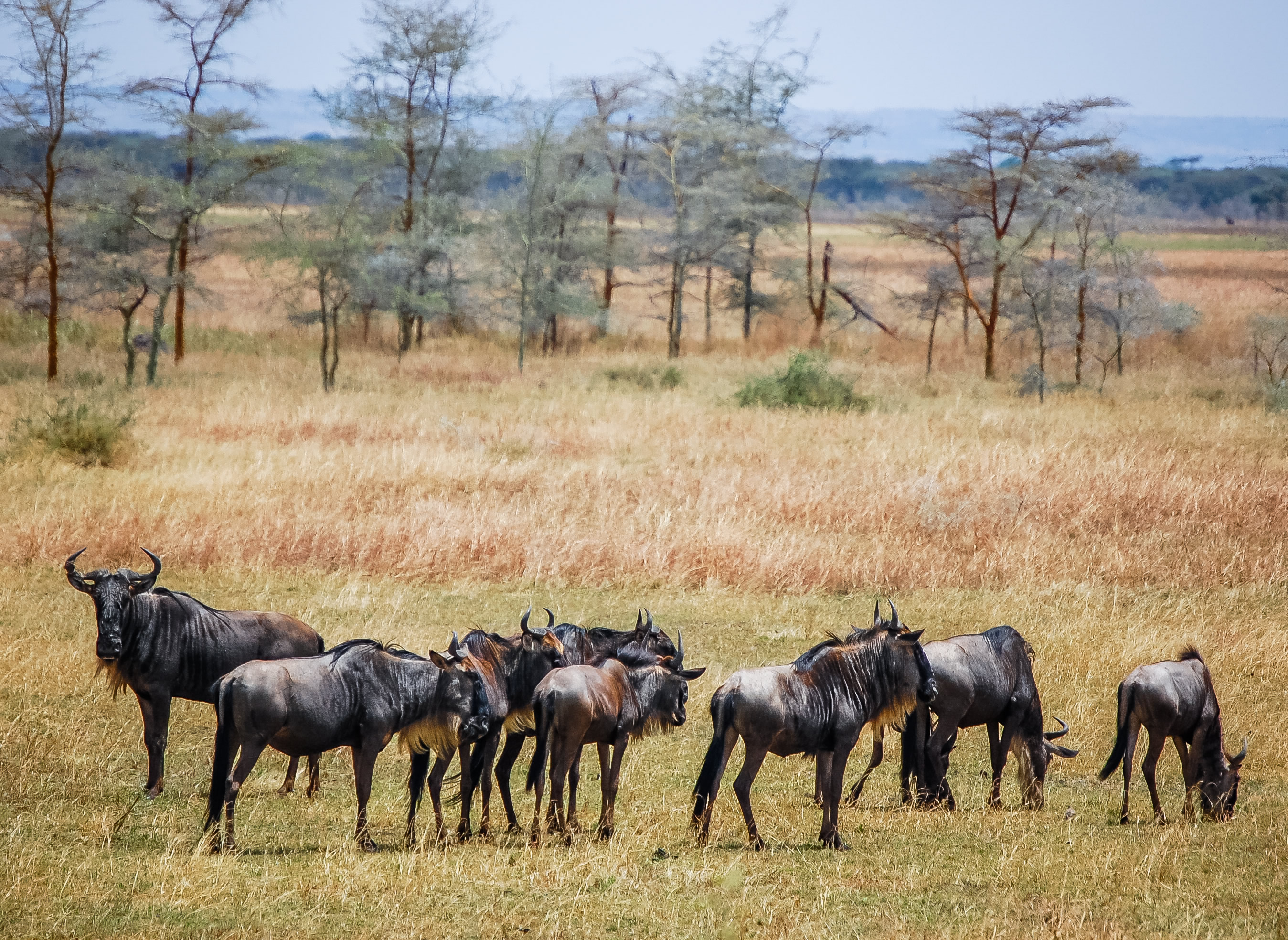
Large numbers of wildebeest reduce the frequency of forest fires, which allows trees to grow. Photo credit: iStock/Getty Images Plus
The huge population of wildebeest has the surprising effect of promoting tree cover. Before the 1960s, the Serengeti wildebeest population was kept relatively small by a disease. In later years, the disease disappeared, allowing the population to grow. By eating much of the grass, the rebounding wildebeest population reduced the frequency of fires (which need grass to burn and spread). Fewer fires led to more trees, which create healthy habitats for many animals ranging from herbivores to predators.
